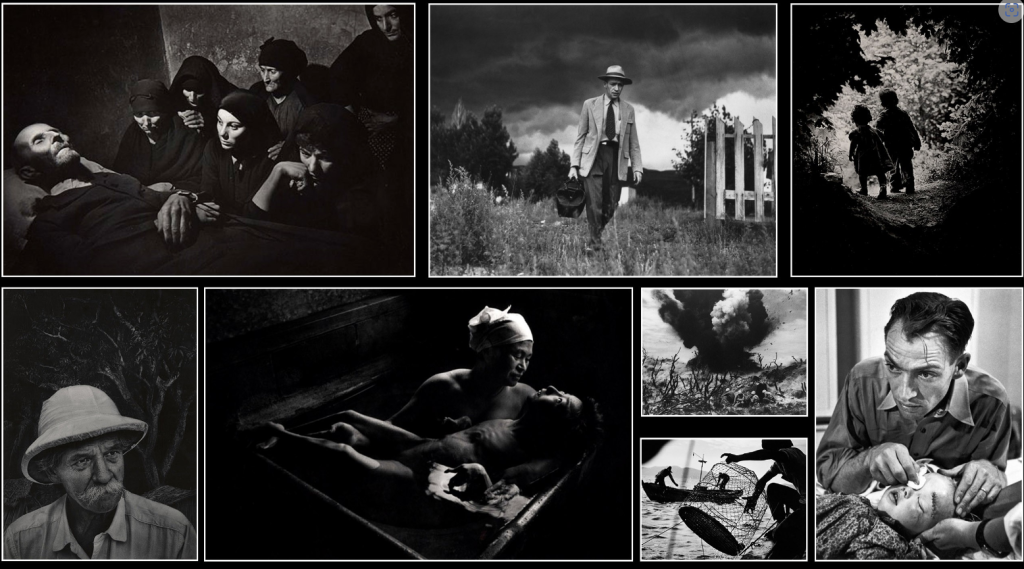W. Eugene Smith, a pioneering figure in photojournalism, is renowned for his powerful black-and-white imagery. His work captures more than just visual moments; it conveys profound stories and emotions. Smith’s unique style and approach to black-and-white photography offer valuable insights into the medium’s potential and limitations.
Smith’s photographic style is distinguished by its deep emotional impact and meticulous composition. His black-and-white images are not merely depictions of reality, but evocative stories told through the play of light and shadow; his use of high-contrast and rich tonal ranges creates dramatic and intense visual narratives and his photo essays, such as “Country Doctor” and “Spanish Village,” exemplify his ability to capture the human condition with empathy and clarity.

Smith’s approach to black-and-white photography involved a careful balance of technical precision and artistic expression. His images are characterized by their sharp detail and dynamic range, achieved through extensive darkroom work. This meticulous attention to detail allowed Smith to highlight textures and nuances that might be lost in colour photography.
Timeless and technical, W. Eugene Smith’s mastery of black-and-white photography underscores its unique strengths. Whether used to document reality or create artistic statements, black-and-white photography remains a powerful tool in the visual arts, offering a distinctive perspective on the world.
A powerful photojournalist, and one to look at when exploring your own style in black and white.